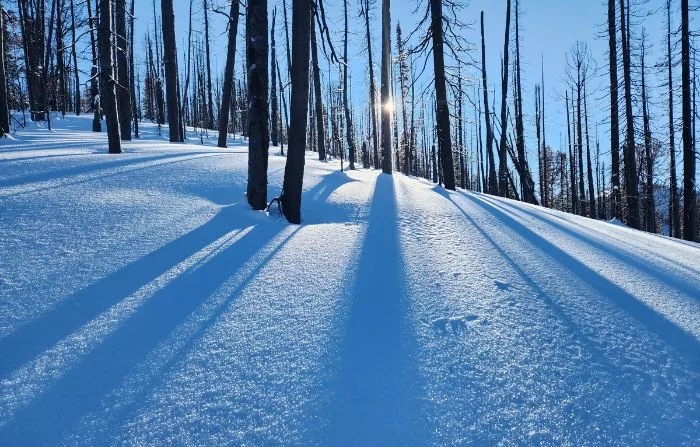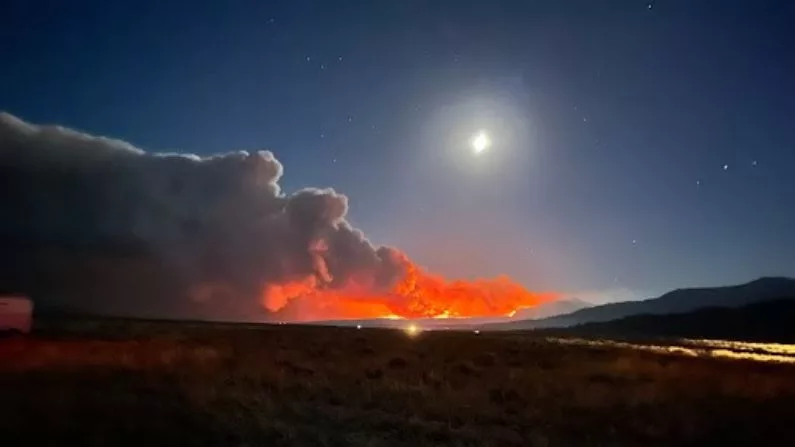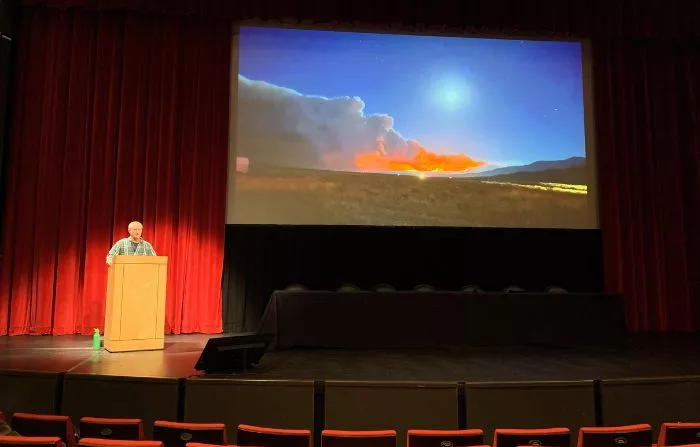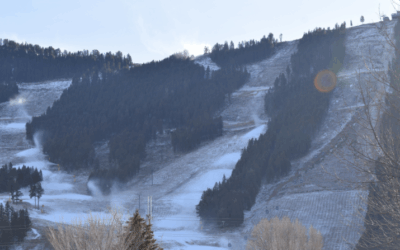As wildfires burn more frequently and intensely across the West, the U.S. Geological Survey released a first-of-its-kind study finding that less tree coverage could mean longer avalanche slide paths. The study also showed recent fires resulted in more terrain capable of producing avalanches.
Scott Savage, the director of the Sawtooth Avalanche Center and an author of the study, presented the results to recreators at the Wyoming Snow and Avalanche Workshop in Jackson last weekend.
He urged skiers, snowboarders and sledders to make conservation decisions when venturing into the backcountry in burned areas.
“It’s an entirely different environment,” Savage said. “Those old safe zones you’re used to hiding under, you’re used to knowing you can stop and eat lunch — they might not be safe anymore.”
Findings showed that almost a fifth (17%) of the studied burned area in Central Idaho could now be susceptible to avalanches — when it wasn’t before.
“Treat it like you’ve never been there,” Savage warned the crowd.
‘Cracking the egg’
According to another author, Zachary Miller with the Northern Rocky Mountain Science Center, avalanche forecasters were inspired to conduct the study in the Sawtooth National Forest, after the Ross Fork Fire wiped out nearly 38,000 acres last year.

Skiers often seek out areas burned by wildfires, which open up new terrain. (FS Sawtooth Avalanche Center)
“They were snowmobiling up roads to go do avalanche forecasting work and collect data in the field and suddenly seeing avalanches where they had never seen them cross the road before,” Miller told KHOL. “It was like, ‘Whoa, that’s different. And that didn’t exist before this fire.’”
He said snow scientists had been interested in studying the impact of wildfires on avalanches for a while but had never been able to “crack the egg.” They were able to complete the study, Miller said, due to advances in satellite mapping and avalanche modeling.
Looking at the burned area, they measured slope angles and the amount of forest cover before and after the fire to identify where avalanches have the potential to start and how far they may go.
And the results, Miller said, were shocking.
“So suddenly these avalanches are potentially going to grow bigger and run further than they have before because they have less forest there to slow them down or to change their dynamics as they move down the hillside,” he said.
And there’s a snowball effect. Savage explained to this weekend’s audience that the snow crashing down slopes can take out the burned trees lower down in the valley, creating the potential for larger avalanches in the future.
“Once you take them all out – all those trees – the next similar sized avalanche is going to go even further,” Savage said.
What’s next
Savage emphasized wildfires aren’t going away.
Between 1984 and 2015, a study found that climate change doubled the number of large fires in the western U.S.
A 2016 study from the the National Oceanic and Atmospheric Administration [NOAA] found climate change has enhanced the drying of organic matter. And a 2021 study supported by NOAA concluded that climate change is the main driver of the increase in “fire weather” in the western United States.
And for much of the region, projections show that warming temperatures could increase the average amount of burned area by as much as 600% in some types of forests.
“We’re probably not going to see wildfires magically stop burning such large chunks of terrain,” Savage said.
Both Savage and Miller encouraged backcountry-goers to remember to take a step back and factor in fire history when picking out the best terrain moving forward, in addition to the many other factors they consider.
“Build in an extra margin of error,” Miller said.
The researchers hope to expand the preliminary studies across the West to see how wildfires change and affect different environments.
This story has been edited for clarity.







